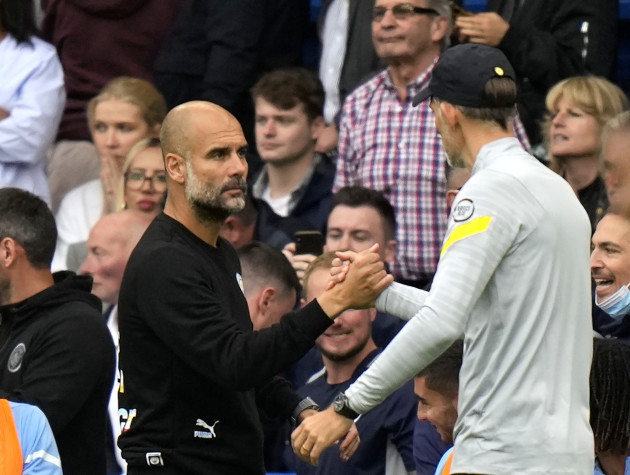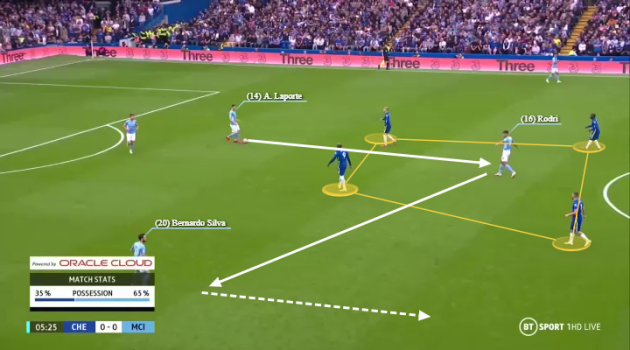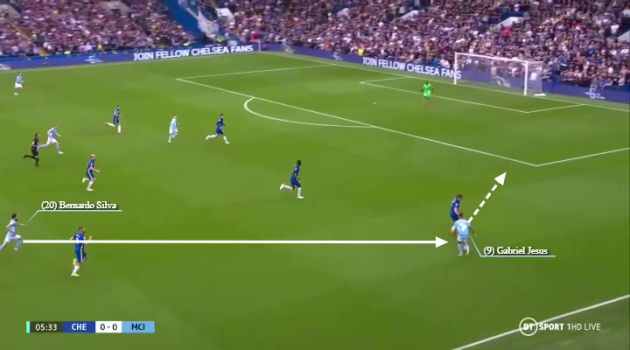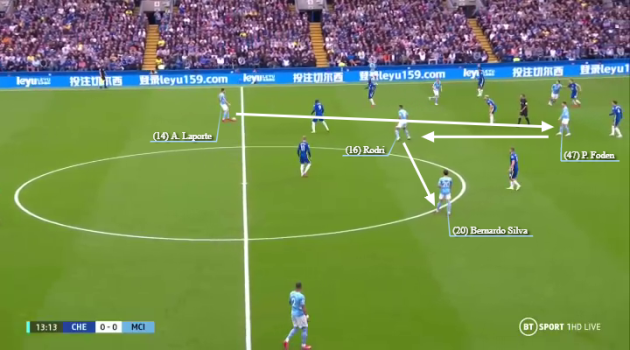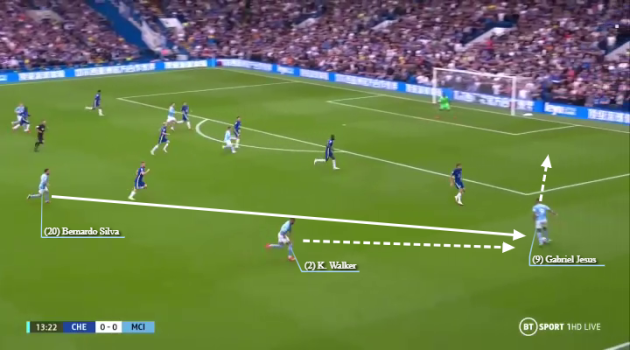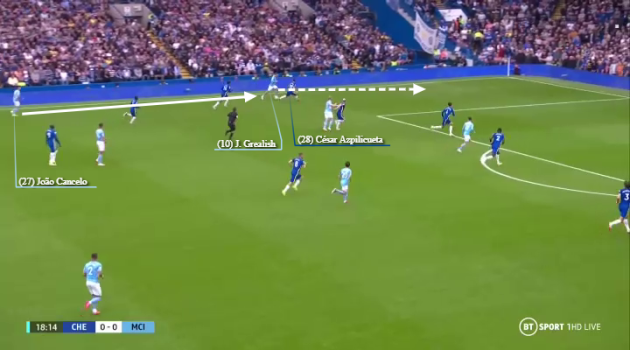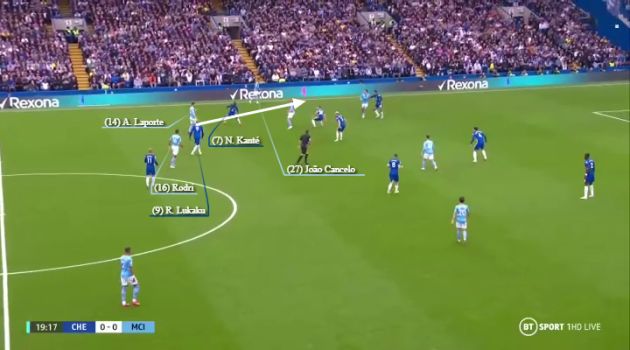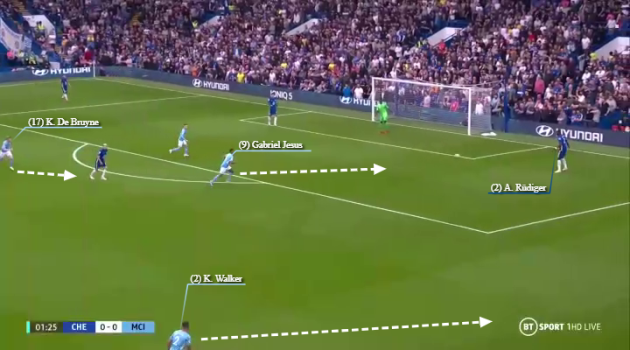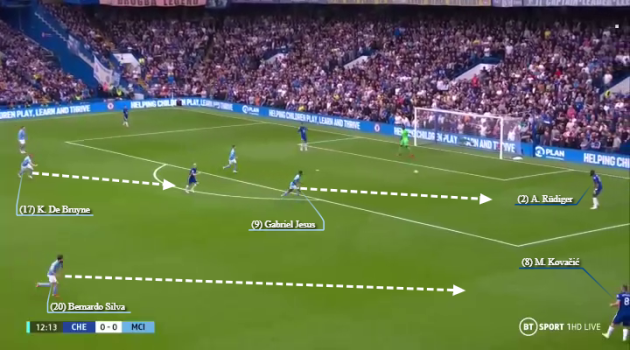Two of the best managers, and two of the best sides, in world football went head-to-head on Saturday morning. As build-ups to a game go, this was one match that didn’t need any false hype.
Dropped points at home to Southampton last Saturday would not have been in Pep Guardiola’s plan. Twenty-four hours later Thomas Tuchel was giving a tactical masterclass as his Chelsea side came away from White Hart Lane with all three points.
Advantage to the German. Could Guardiola hit back?
Chelsea change approach
In last week’s Tactics Board, we looked at how Tuchel’s decision to switch to a 3-5-2 formation during the match against Tottenham pretty much won his side the game.
The big question leading into this one was whether he would revert to their usual formation, the 3-4-2-1 shape they used when beating Manchester City in the Champions League final, or stick with the new variation which had worked so effectively during last week’s second half?
He went with the latter, leaving out his two number tens, Kai Havertz and Mason Mount, in favour of an extra midfielder in N’Golo Kante and a second striker in Timo Werner.
In theory, the reasoning looked sound. A front two would allow his side to press City’s centre-halves aggressively while still having three bodies in the middle of the field.
If the Chelsea wing-backs pushed up on City’s full-backs, in the way they did against Spurs, then Guardiola’s side could find it difficult to play out in their usual manner.
Surprisingly though, this was not the approach that Tuchel’s players took. Instead, the front two dropped off allowing City’s centre-backs to have comfortable possession. You would assume this was with the intention of stopping Rodri and Bernardo Silva from getting on the ball, but it didn’t work.
Early on, Romelu Lukaku and Werner were continually getting caught between two stools, neither pushing up to pressure the centre-half on the ball, nor dropping deep enough to disrupt the centre midfielders when the ball was inevitably played through the lines.
In this first example below, Aymeric Laporte is easily able to play a pass through to Rodri, who in turns pops it out to Silva to carry the ball forward into space. There are four players around Rodri as he receives the initial pass but none of them are close enough to apply pressure on him.
From there, Silva plays wide to Gabriel Jesus and just like that City are into the final third and running directly at the Chelsea defence.
Soon afterwards, we have an almost identical situation. This time Laporte plays forward to Phil Foden first, who sets it back to Rodri. Again, there is no player close enough to put pressure on him allowing him to find Silva. Silva plays right to Jesus and City are back in the final third with ease.
At this point, Tuchel appears to get the message to Lukaku to drop even deeper and try to stay closer to Rodri. While this solved one problem, it creates another.
Due to the deep positioning of Chelsea’s wing-backs, Kante had spent the first 15 minutes of the game shuttling out to the right to close down Joao Cancelo when he received the ball.
Now though, with Lukaku tied up with Rodri, Kante found himself getting sucked towards an advancing Laporte. Given how comfortable Laporte is on the ball, he was easily able to take advantage of this situation, getting the timing and the angle of his passes spot on to release Cancelo, who was then able to double up with Grealish and cause problems for Chelsea’s defence.
In the first example below, Laporte goes outside Kante’s press to release Cancelo while, in the second, he slides the ball inside of him. It really was a no-win situation for the diminutive Frenchman.
Man City take the opposite approach
While Chelsea were uncharacteristically conservative in their pressing, Man City certainly were not. They continually looked to push Chelsea towards Antonio Rudiger in their build-up play, setting a trap and then looking to pounce.
Below, we can see Jesus take up a more central starting position than you would expect from a player playing on the right wing. From there, he angles his approach run to force Rudiger to play towards the sideline.
As he does this, Kevin De Bruyne and Silva squeeze up on the players in behind while Kyle Walker gallops towards Marcos Alonso to press the only pass that’s available.
With no other passing options available, Alonso is forced to play an aimless ball forward which Rodri picks up for City.
In another example, we can see Chelsea change their approach but suffer the same fate. Again, Jesus takes up the same starting position but this time its Mateo Kovacic who is outside of Rudiger, with Alonso gone higher to try and pin back Walker.
Silva looks like he has a lot of ground to make up to get across to the Croatian but does so admirably. With the cavalry around him backing up his press, Silva nicks the ball from Kovacic as he tries to go past him, forcing a throw for City deep in Chelsea territory.
The vast difference in the two teams’ approaches to pressing is summarised neatly by taking a look at their PPDA (passes per defensive action) stats.
Chelsea finished the game with an average PPDA of 23.9. This means they allowed Man City to take almost 24 passes per possession before making an effort to take the ball off them. City finished the game with a PPDA of 8.8.
No clear chances but cumulative pressure adds up
If Tuchel wanted to find a positive in Chelsea’s first-half performance he would point to the fact that for all of City’s possession and dominance, they carved out very little in the way of real goal scoring chances. When you spend so much time in your own third of the field though, you are walking a tightrope.
All bar one of the attacks highlighted above finished with City having a corner kick. They finished the first half with nine in total. Their tenth would prove decisive. Eight minutes into the second half, De Bruyne and Silva worked a short corner and while there was a large slice of good fortune in how the ball made its way to Gabriel Jesus, and into the goal, this was essentially a case of cumulative pressure adding up.
Conclusion
Tuchel, by his own admission in his post-game press conference, got this one badly wrong. To be fair to him though, it is probably the first big mistake he’s made since arriving at Stamford Bridge at the beginning of this year.
Chelsea choosing to allow Man City to have the ball was, in itself, not the main problem. They averaged 39% of the ball, marginally higher than the 38% that was enough for them to beat City in last May’s Champions League decider.
The real issue here was their lack of a functioning plan when they did have it. They finished the game with an xG of 0.18. This is their lowest tally not just of this season, but well below anything from last season, including the run of games that lead up to Lampard’s dismissal.
Lukaku was way off his usual performance level and is unlikely to be so poor again, but you would also question how much he enjoyed the idea of having a strike partner. I’d expect a return to their 3- 4-2-1 shape against Juventus on Wednesday night.
Despite their win, I would still question if Guardiola’s team selection got the most from his side. Foden doesn’t appear to offer the same threat in the false nine role as he does in any of the other numerous positions he could have been fielded in.
Though he had a decent game, Jesus certainly doesn’t look to me to be a better pick than Riyad Mahrez on the right wing but is surely the best option at centre forward?
I’m sure Guardiola has his reasons for his decisions, and who am I to question him, but I’d love to hear him explain them to help us all get a better understanding of his thinking process.

